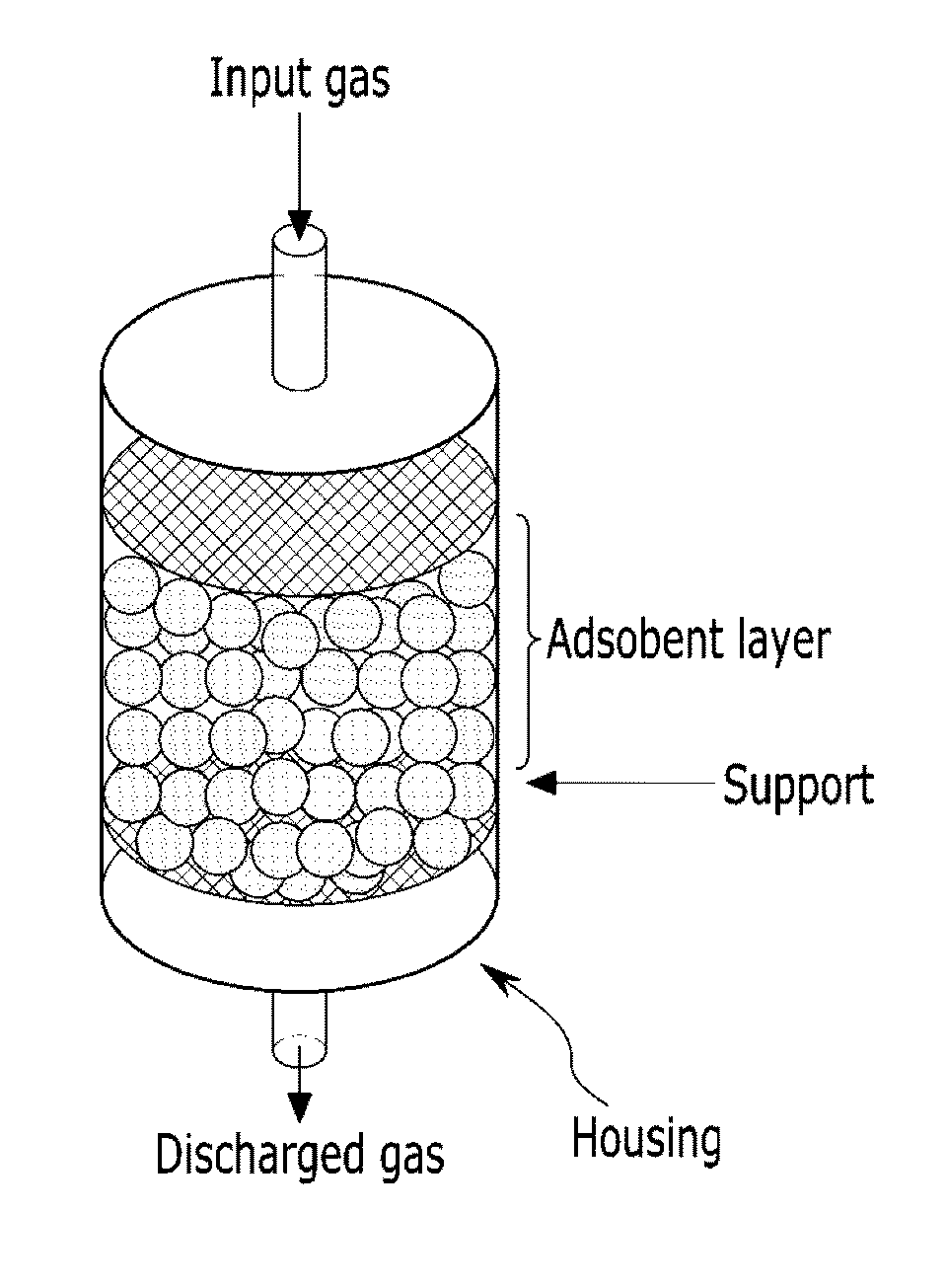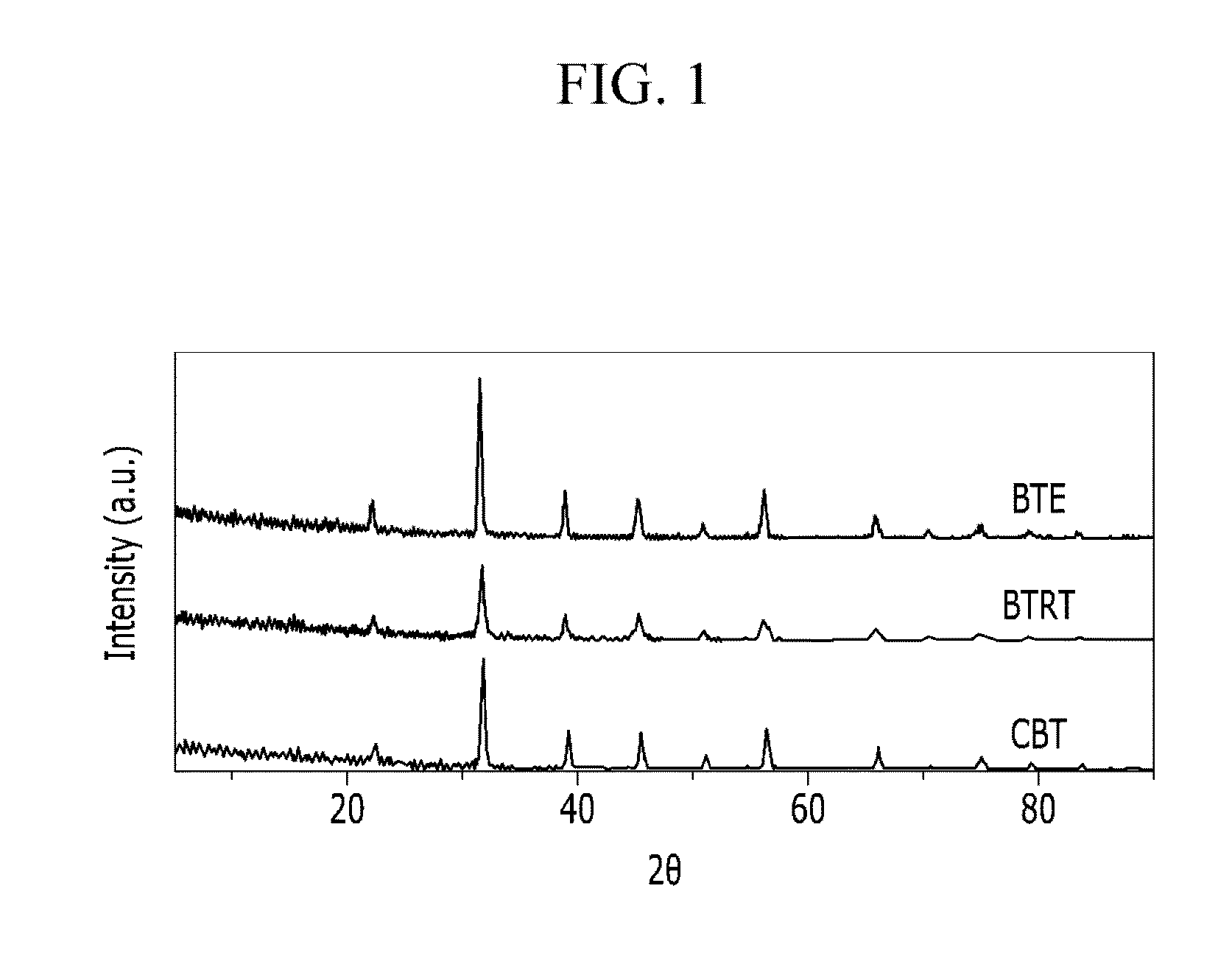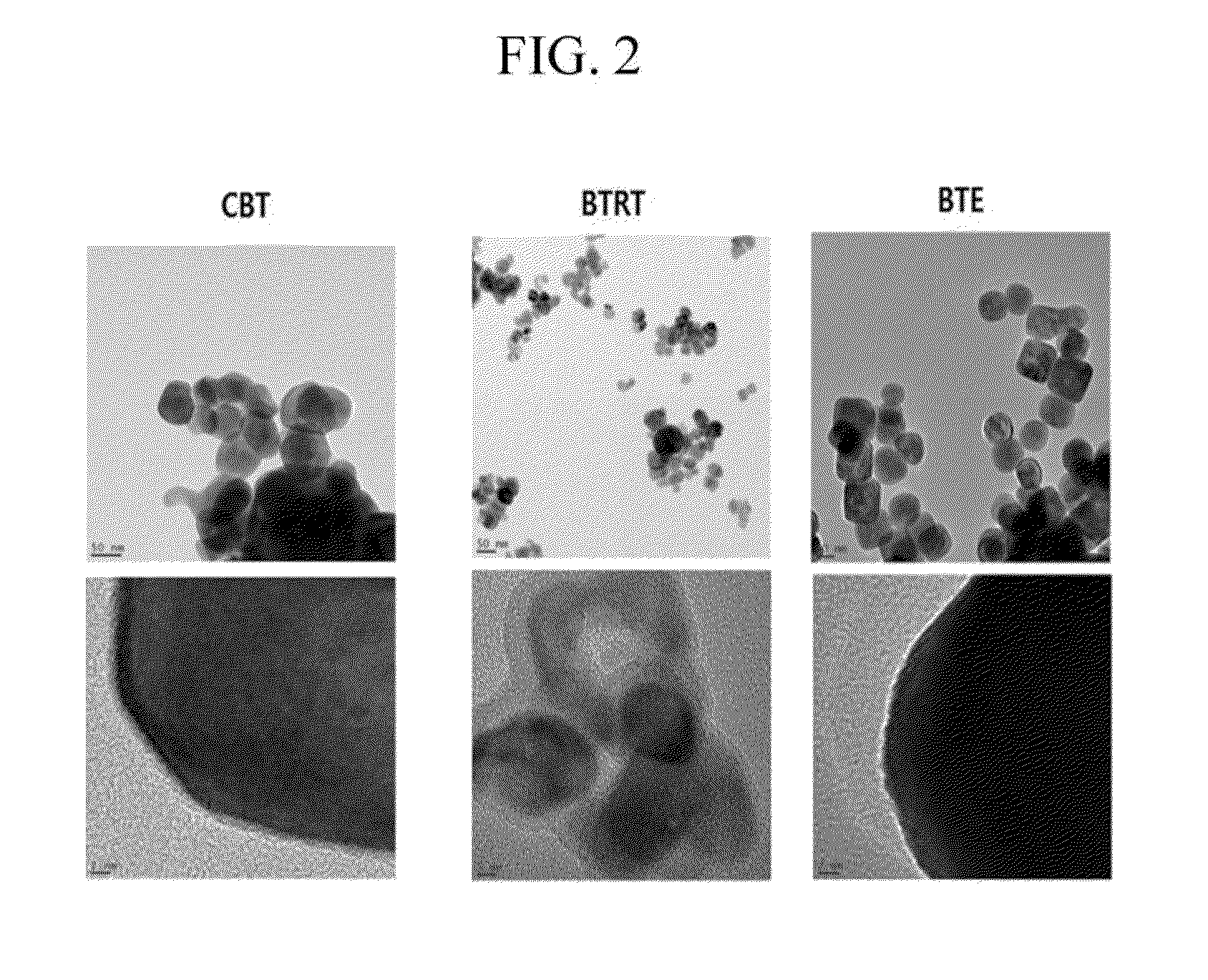Carbon dioxide adsorbent including barium titanate, carbon dioxide capture module including the same, and methods for separating carbon dioxide using the same
- Summary
- Abstract
- Description
- Claims
- Application Information
AI Technical Summary
Benefits of technology
Problems solved by technology
Method used
Image
Examples
preparation example 1
[0051]0.8 mol (based on the Ti amount) of TiCl4, is dissolved in water and 18.9 g of an ammonia aqueous solution (5 wt %) is added thereto to provide a titanium hydroxide gel. 73.6 g of Ba (OH)2.8H2O is dissolved in water at 80° C. to provide an aqueous solution of barium hydroxide. The aqueous solution of barium hydroxide is introduced into a pressure reactor, which is then filled with nitrogen. The titanium hydroxide gel as obtained above is added dropwise to the barium hydroxide aqueous solution under the nitrogen atmosphere to prepare a slurry. The slurry is stirred and aged at 60° C. for 30 minutes and then is subjected to a hydrothermal synthesis in the pressure reactor at 250° C. for 48 hours. After the reaction, the reaction slurry is cooled to room temperature, and then is washed and filtered under the nitrogen environment and is dried at 105° C. for 12 hours to provide barium titanate (hereinafter referred to as BTE).
[0052]The X-ray diffraction spectrum of BTE is obtained ...
preparation example 2
[0053]A barium titanate (hereinafter referred to as BTRT) is prepared in the same manner as set forth in Example 1, except that the atomic ratio of Ba / Ti is 0.9980.
[0054]FIG. 1 shows an X-ray diffraction spectrum of the obtained BTRT using the X-ray diffractometer (trade name: Phillips XPert PRO). The BET adsorption test is performed under the nitrogen condition to measure the specific surface area BTRT. The results are shown in Table 1. Using the Barrett-Joyner-Halenda (BJH) method (measuring particle size from a TEM photograph and calculating from the crystal peak width with XRD), the particle size range of BTRT is measured, and the results are also shown in Table 1. The Ba / Ti atomic ratio is measured according to the inductively coupled plasma atomic emission spectroscopy (ICP-AES) manner, and the results are obtained from the weight ratio and shown in Table 1. In addition, TEM analysis (TEM device name: Tecnai G2 TEM (FED) is performed on the BTRT, and the results are shown in F...
example 1
CO2 Adsorption Test Using Barium Titanate Commercially Available
[0056](1) Barium titanate (trade name: Barium Titanate, hereinafter referred to as CBT) from Sigma Aldrich is used as a carbon dioxide adsorbent to fabricate a carbon dioxide capture module having the structure shown in FIG. 3. Using the same, a carbon dioxide adsorption test is performed under the following conditions to provide a carbon dioxide concentration profile. The breakthrough curve is shown in FIG. 4.
[0057]Composition of input gas stream: 40% CO2+60% H2
[0058]Total flow rate: 200 mL / min
[0059]Weight of the filled adsorbent: 0.25 g
[0060]Thickness of the adsorption layer: 0.5 cm
[0061]Adsorption temperature: 200° C.
[0062]For the barium titanate, analyses are made for its X-ray diffraction spectrum, the specific surface area, and the average particle size, and the Ba / Ti atomic ratio is measured via the ICP-AES manner in the same manner as set forth in Preparation Example 1 and Preparation Example 2, and the results...
PUM
| Property | Measurement | Unit |
|---|---|---|
| Temperature | aaaaa | aaaaa |
| Temperature | aaaaa | aaaaa |
| Temperature | aaaaa | aaaaa |
Abstract
Description
Claims
Application Information
 Login to View More
Login to View More - R&D
- Intellectual Property
- Life Sciences
- Materials
- Tech Scout
- Unparalleled Data Quality
- Higher Quality Content
- 60% Fewer Hallucinations
Browse by: Latest US Patents, China's latest patents, Technical Efficacy Thesaurus, Application Domain, Technology Topic, Popular Technical Reports.
© 2025 PatSnap. All rights reserved.Legal|Privacy policy|Modern Slavery Act Transparency Statement|Sitemap|About US| Contact US: help@patsnap.com



